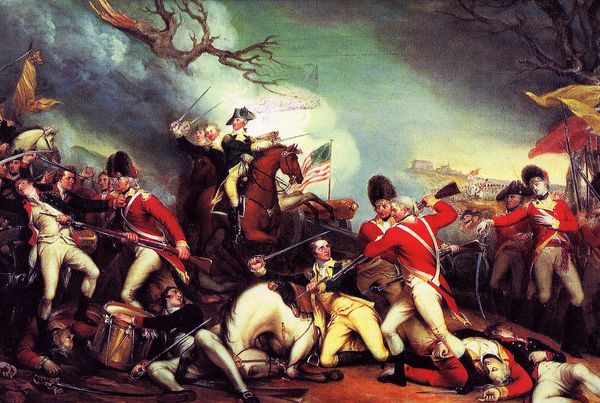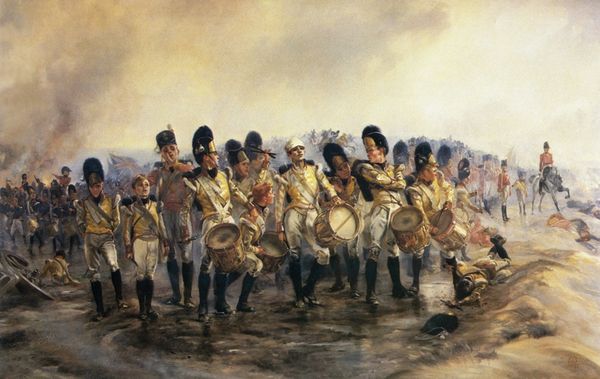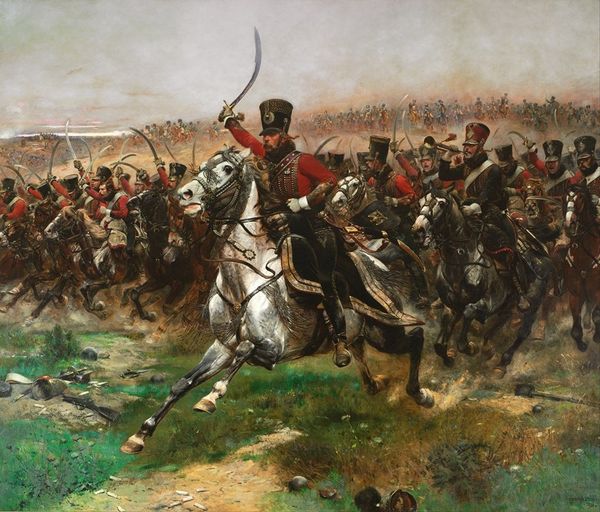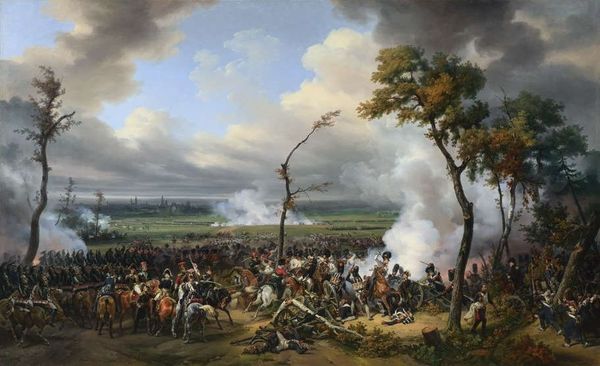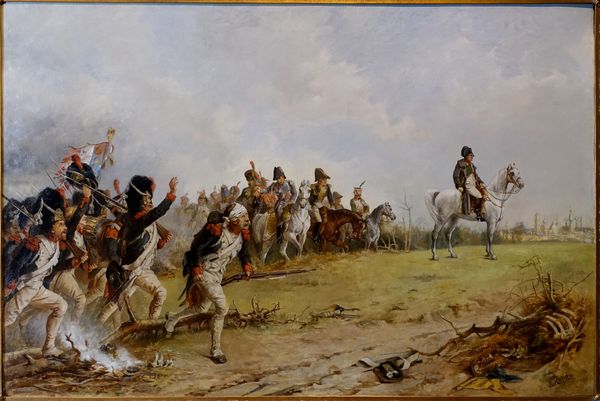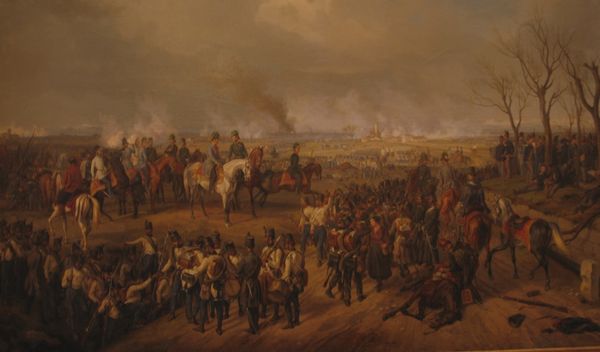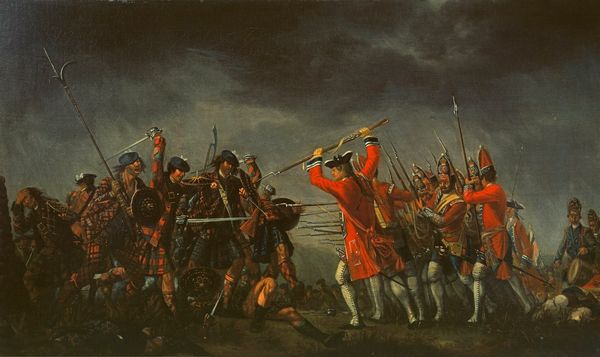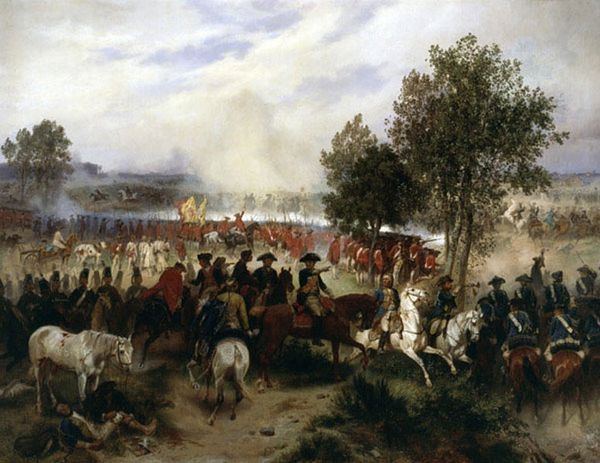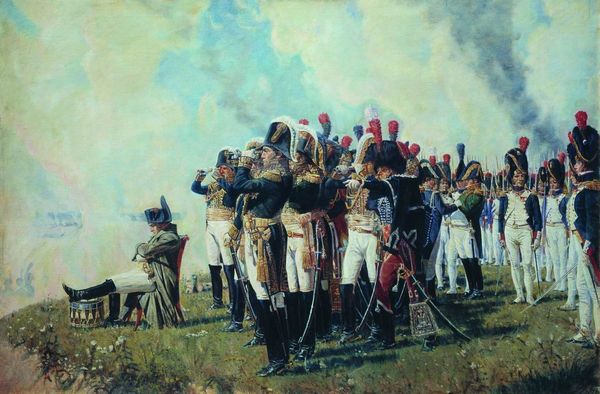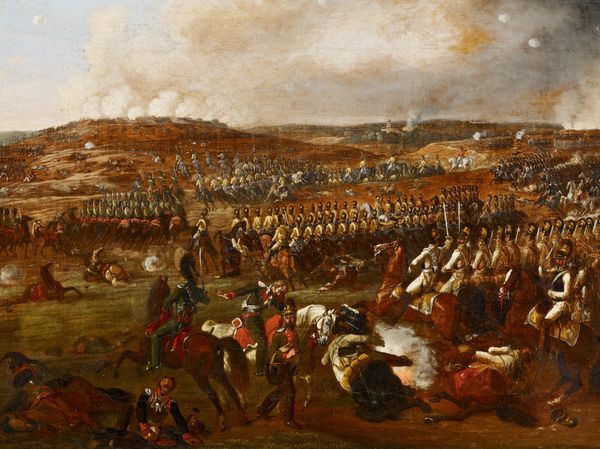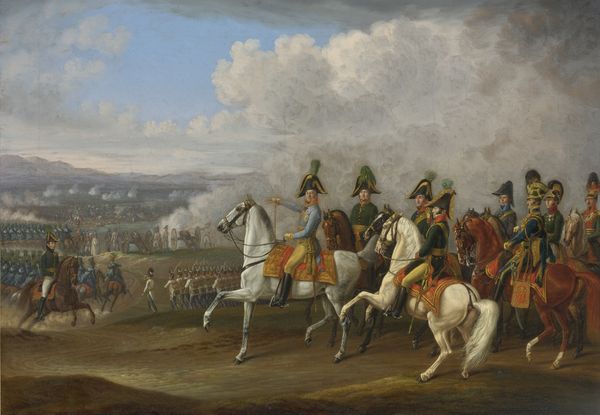
Dimensions: 216.2 x 97.2 cm
Copyright: Public domain
Editor: Standing before Elizabeth Thompson's "The 28th Regiment at Quatre Bras, 1815", painted in 1875 using oil paint, I’m struck by how the composition feels almost overwhelming. The sheer number of figures arranged horizontally, creating a very long frieze effect. What compositional elements do you notice first? Curator: Indeed. Immediately, the unwavering horizontal line of the regiment’s muskets arrests the eye. Thompson masterfully utilizes this line to create a sense of unity and imposing resolve amidst the chaotic backdrop. Consider how the muted tones of the smoke and landscape serve to highlight the vibrant red uniforms, anchoring the figures in the visual plane and bringing depth through contrast. Are you registering the deliberate repetition of forms: the helmets, the faces, each acting as modular units in this impactful design? Editor: Yes, now that you point it out, the repetition creates a kind of visual rhythm that reinforces that unified front. But what about the figures that break that pattern? Are they intentional disruptions of that rhythm? Curator: Precisely! Note the dynamic figures on horseback at the periphery, puncturing the rigid line and pulling our vision through the scene. Observe, as well, how the artist deploys a subtly gradated light, bathing the regiment's center and gradually diffusing outwards to the chaotic flanks, controlling the narrative through luminosity and directing the viewer's engagement with the composition. Does that calculated use of light clarify how our reading is guided from one figure to the next? Editor: Absolutely, I hadn't really noticed it until you mentioned it! Paying closer attention to the formal elements of the piece really brings out an order and dynamism I overlooked initially. Curator: Exactly. By focusing intently on the artwork’s inherent structure and arrangement, a deeper understanding surfaces—not necessarily what the painting *means*, but rather how it *functions*.
Comments
No comments
Be the first to comment and join the conversation on the ultimate creative platform.
